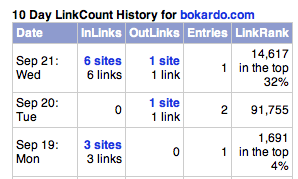By now you’ve heard why Ajax is great for web-based applications:
- It is standards-based
- It is degradeable with unsupporting browsers
- It is relatively easy to implement
- The benefits of a one-screen interface (no disruptions for page refreshes)
The Side Benefit of Ajax
But there’s another side benefit, that I think might be as influential as any of the above. When you build an Ajax application, you need to break down your server calls into smaller chunks. You’re no longer requesting complete web pages when you hit your server, you’re requesting information via a simplified API that you create (something as simple as a PHP script, perhaps).
This is yet another step toward microcontent, or pieces of data that live on their own and are called together to form applications screens or web pages. If you weren’t planning on accessing your content in this way before you decided to use Ajax techniques, you will definitely have to if you move that way.
This seems to be an overall trend, however. First we gain granular access to our own content for our own needs, and then we provide public access to others after we see how useful it is.
